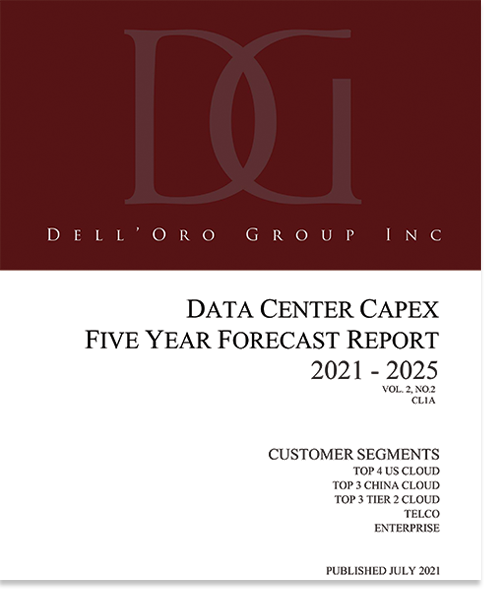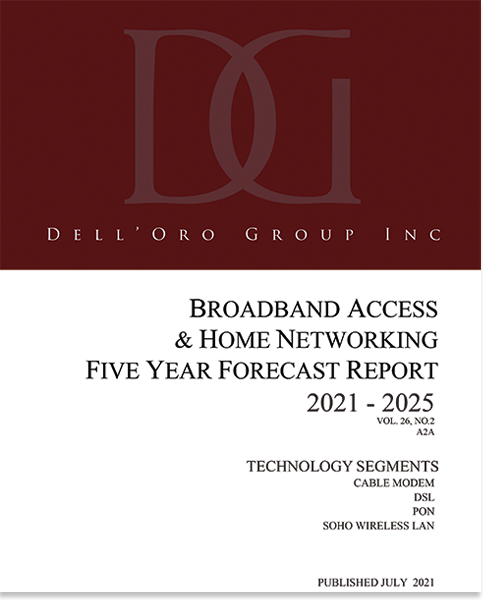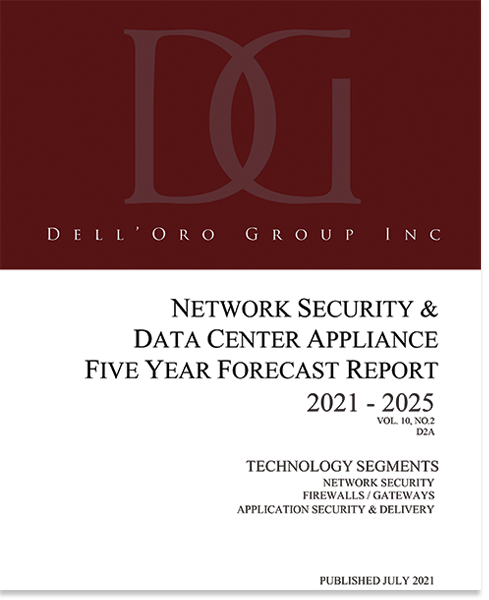Dell’Oro published an update to the Data Center Capex 5-Year Forecast report in July 2021. Server spending is forecast to grow at a compound annual growth rate of 11 percent over five-year, comprising nearly half the data center capex by 2025.
The pandemic resulted in strong demand for computing and digital technologies due to a shift in enterprise and consumer behaviors. Current semiconductor foundry capacity is not adequate to meet the recent surge in global demand. The cost of servers and other data center equipment is projected to rise sharply in the near term partly due to the global semiconductor shortages. An increase of server average selling prices (ASPs) could approach the double-digit level that was observed in 2018, which was another period of tight supply and high demand. However, in the longer term, we anticipate that supply and demand dynamics could reach equilibrium and that technology transitions could drive market growth. We identify the following technology trends that shape our five-year forecast:
- CPU Refresh Cycles: Intel and AMD both have an aggressive roadmap to introduce new platform refreshes as the processor race heats up. Both the Intel Sapphire Rapids and AMD EPYC Genoa, expected in 2022, will pack more processor cores and memory channels, and support the latest interfaces such as CXL, DDR5, and PCIe Gen 5 that could enable denser server form-factors and new architectures.
- Accelerated Computing: A new class of accelerated servers densely packed with co-processors that are optimized for application-specific workloads, such as artificial intelligence and machine learning, is emerging. Some Cloud service providers such as Amazon and Google, have deployed accelerated servers using internally developed AI chips, while other Cloud service providers and enterprises have commonly deployed solutions based on GPUs and FPGAs. We estimate that attach rate of servers with accelerators to grow to 13 percent by 2025
- Edge Computing: Certain applications—such as cloud gaming, autonomous driving, and industrial automation—are latency-sensitive, requiring Multi-Access Edge Compute, or MEC, nodes to be situated at the network edge, where sensors are located. Unlike cloud computing, which has been replacing enterprise data centers, edge computing creates new market opportunities for novel use cases.
With the evolution of CPU platforms along with and proliferation of accelerated computing, we anticipate data centers will be better optimized to process application-specific workloads with fewer, but more powerful and denser servers, increasing the total available market through higher server ASPs. Edge computing, on the other hand, will increase the available market with greenfield deployment of servers distributed edge locations. To access the full Data Center Capex report, please contact us at dgsales@delloro.com.
About the ReportDell’Oro Group’s Data Center Capex 5-Year Forecast Report details the data center infrastructure capital expenditures of each of the ten largest Cloud service providers, as well as the Rest-of-Cloud, Telco, and Enterprise customer segments. Allocation of the data center infrastructure capex for servers, storage systems, and other auxiliary data center equipment is provided. The report also discusses the market and technology trends that can shape the forecast. |
 |

